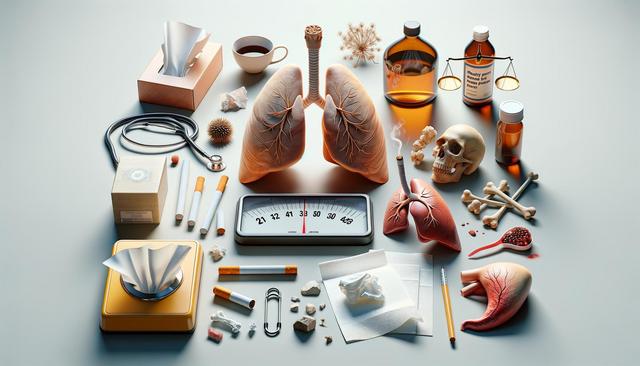Understanding the Purpose of Radiation Therapy
Radiation therapy plays a central role in modern oncology, offering a targeted approach to treating a wide range of cancers. It works by damaging the DNA of cancer cells, making it difficult for them to grow and divide. While the primary goal is to destroy cancerous cells, radiation can also be used to shrink tumors before surgery or reduce symptoms in advanced stages of cancer. Depending on the type, location, and stage of cancer, radiation might be used alone or in combination with other treatments like chemotherapy or surgery.
There are two main types of radiation therapy: external beam radiation, where the radiation is delivered from a machine outside the body, and internal radiation, or brachytherapy, where radioactive material is placed inside the body near cancer cells. The choice between these methods depends on various factors, including the area being treated and the overall health of the patient. Despite its effectiveness, radiation therapy is often accompanied by concerns about its long-term impact on survival and side effects, which are important to understand during treatment planning.
Life Expectancy After Radiation Therapy
Estimating how long someone might live after undergoing radiation therapy depends on numerous variables. These include the type and stage of cancer, overall health, age, response to treatment, and whether other treatments are involved. Radiation therapy itself does not determine a specific life expectancy but rather contributes to an improved prognosis by controlling or eliminating cancerous cells.
Patients who receive radiation therapy as part of curative treatment for early-stage cancers often enjoy long-term survival and, in some cases, remission. For example, individuals with localized prostate or breast cancer may live many years after completing treatment. Conversely, for those with advanced or metastatic cancer, radiation is often used to relieve symptoms and improve quality of life rather than achieve a cure. In such cases, life expectancy varies widely based on individual circumstances.
It’s essential to have open discussions with healthcare providers to understand personal prognosis. Survivors are often monitored for years after treatment through follow-up appointments and imaging studies, which help assess the effectiveness of therapy and detect any recurrence early.
Common Side Effects of Radiation Therapy
While radiation therapy can be highly effective, it is also associated with a range of side effects. These side effects vary based on the treatment area, dosage, and individual sensitivity, and they can be divided into short-term and long-term effects.
Common short-term side effects include:
- Fatigue
- Skin irritation or burns at the treatment site
- Hair loss in the targeted area
- Nausea or digestive issues (if the abdomen is treated)
- Difficulty swallowing (if the chest or neck is treated)
These effects typically resolve within a few weeks after treatment ends. However, some patients may experience long-term side effects, such as:
- Scarring or fibrosis in treated tissues
- Changes in organ function (e.g., lung, heart, or bladder)
- Secondary cancers, although rare, may develop years later
- Hormonal imbalances when glands are affected
Doctors take several steps to minimize side effects, such as using precision technology to target only the tumor and employing protective measures for surrounding healthy tissues.
Managing and Reducing Side Effects
Managing the side effects of radiation therapy involves both prevention and treatment strategies. Healthcare teams typically provide comprehensive care plans that include medications, nutritional guidance, and lifestyle adjustments to support patients throughout their treatment journey.
Some effective management strategies include:
- Using prescribed creams or ointments for skin irritation
- Following a tailored diet to reduce gastrointestinal discomfort
- Staying hydrated and maintaining light physical activity to combat fatigue
- Attending regular follow-ups to monitor for late-onset effects
Patients are also encouraged to report any new symptoms immediately, as early intervention can reduce the severity of side effects. In some cases, radiation schedules may be adjusted to allow the body time to recover. Support groups and counseling may also offer emotional and mental health benefits during the treatment process.
By actively managing side effects, many patients are able to maintain a relatively normal daily routine and improve their overall quality of life during and after radiation therapy.
Long-Term Outlook and Survivorship
Survivorship after radiation therapy centers not only on longevity but also on quality of life. Many individuals live for years or decades after completing treatment, especially when cancer is detected early and effectively managed. Long-term survivors often experience a return to normal activities, though some may deal with ongoing health considerations related to their treatment.
Key factors that influence long-term outcomes include:
- Early detection and prompt treatment
- Access to follow-up care and screenings
- Healthy lifestyle choices (balanced diet, exercise, avoiding tobacco)
- Support networks, including family, friends, and healthcare providers
In many cases, follow-up care includes regular imaging or lab tests, as well as monitoring for late side effects such as hormonal changes or cardiovascular issues. Some survivors may also require rehabilitation or physical therapy to regain strength and mobility affected by treatment. Psychological support remains an important component, as dealing with cancer and its aftermath can affect emotional well-being.
Overall, while radiation therapy can bring challenges, it is also a powerful tool in modern cancer care. With proper support and medical oversight, many individuals go on to live fulfilling lives after treatment.
Conclusion: Navigating Life After Radiation Therapy
Radiation therapy continues to be a cornerstone in the treatment of cancer, offering hope and extended survival to many patients. While the therapy does come with side effects, understanding the potential impacts and working closely with a medical team can make a significant difference in outcomes. Life after radiation therapy can be shaped by many factors, but with proper care and ongoing monitoring, many patients are able to enjoy meaningful, productive lives. As always, individual prognosis and experiences will vary, so open communication with healthcare providers is essential for informed decision-making and effective recovery.


